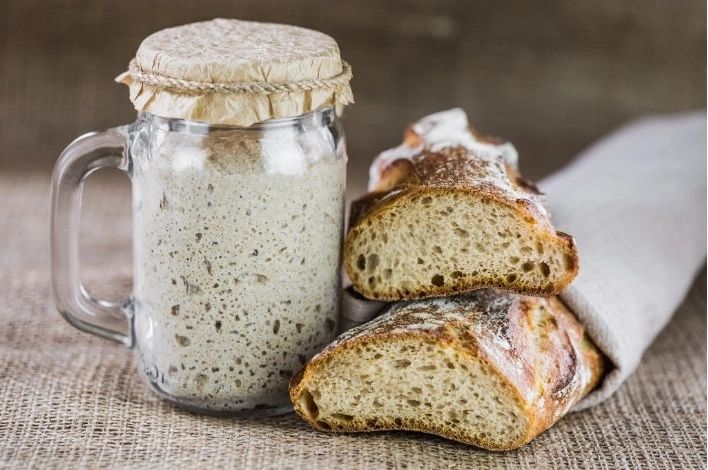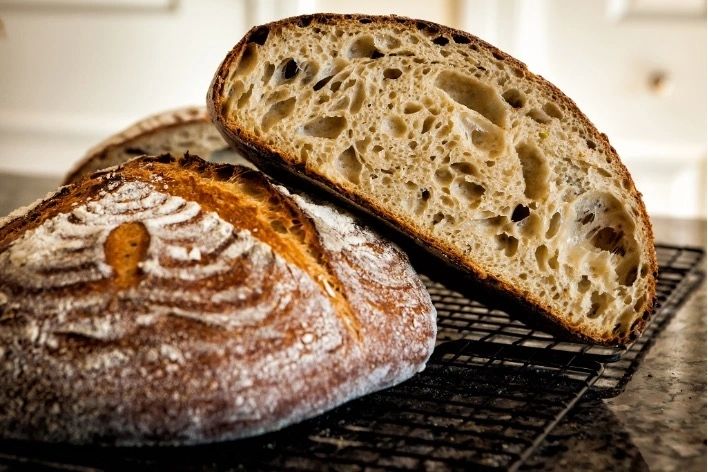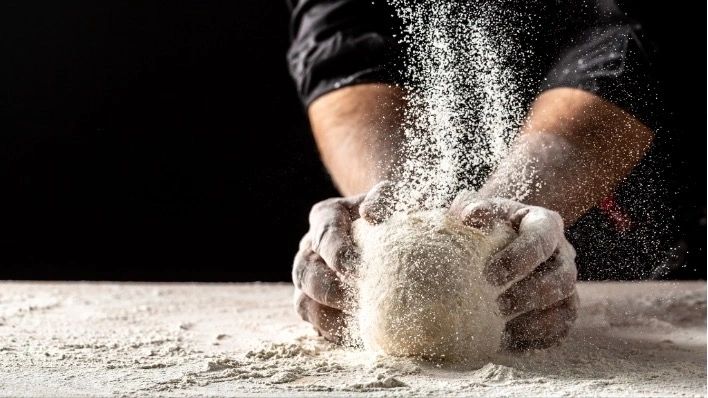The Art And Science Behind Making Sourdough Bread
What happens when you marry science and art in your kitchen? You create a symphony of taste, texture, and aroma that sings to your senses – you create sourdough bread. This loaf, with its crusty exterior, soft interior, and distinct tang, has been beloved for millennia and recently revived in home kitchens around the globe.
Sourdough isn’t just another type of bread; it’s a labor of love, an exercise in patience, and a testament to the magic of microbiology. At its simplest, sourdough is just flour and water. Yet, in this simple mixture, a complex dance unfolds as wild yeasts and bacteria mingle and ferment, creating the bread’s unique flavor and structure.
The first player in our sourdough symphony is the “starter.” This blend of flour and water, left to ferment, captures wild yeast and lactic acid bacteria from the environment. These tiny organisms, each contributing their notes, are the unseen maestros conducting the leavening and flavoring of your bread.

Fermentation, the process driving sourdough, is a delicate balance. Too cold, and the fermentation slows; too warm, and it races ahead. As you learn to listen to your sourdough, understanding its rhythms and needs, you become not just a baker, but a scientist observing and influencing this microbial marvel.
And what of the artistry in sourdough? This comes into play as you shape your dough, determining the final appearance of your loaf. From round boules to long baguettes, your hands become the sculptor, transforming dough into edible art.
Baking the bread is your grand finale, the climax of your symphony. As the loaf bakes, the ‘oven spring’ causes the bread to rise, and the sugars caramelize to form the golden, crusty exterior. When you finally take the bread out of the oven, its tantalizing aroma fills your home, a song of celebration for your efforts.

However, the sourdough journey doesn’t end here. Each loaf you bake, each starter you nurture, teaches you something new. Different flours, hydration levels, and temperatures will all influence your bread, turning each baking session into an experiment, an opportunity for creativity.
And perhaps the most wonderful aspect of sourdough is its community spirit. Sourdough starters can be shared, connecting you with others on the same journey. Through sharing starters, we create a network of sourdough enthusiasts, each of us adding our own unique notes to the universal sourdough symphony.
Baking sourdough bread is much more than a cooking venture; it’s a lesson in biology, a creative outlet, and a process that connects us with generations past who relied on the same natural processes to create their daily bread. So, dive into the captivating world of sourdough. Embrace the scientist and artist within you, and let’s start this delicious symphony.
– Stanislav Kondrashov



